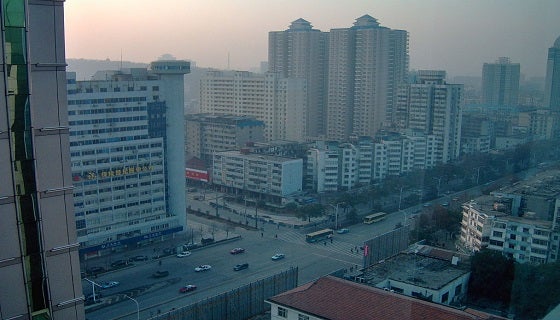Summary
The spread of coronavirus from Wuhan in China has assumed pandemic proportions. Of the regions of the world, South Asia is particularly vulnerable to it. Still, decisions in this regard are not immune from politics and diplomacy.
Contrary to the expectations in many quarters, the major threat emanating from China is not military. It has come in the form of a pandemic, a highly contagious disease that is rapidly spreading from country to country, and one which has also spiked global fear about a nation that took a modicum of pride at being seen as the contemporary world’s most successful development story. With the first cases detected in Wuhan , a city in China’s Hubei province, it has spread like wildfire, first in mainland China itself and then around the world with a rapidity that caught humanity unawares, even before the scientists found a name for the contagion. For now, it has been designated as ‘2019-nCoV’ but is more popularly known as ‘coronavirus’, which the Chinese leader President Xi Jinping has ordered the Peoples’ Liberation Army to battle against and eliminate. This is not the kind of adversary that those forces are generally trained to combat.
The coronavirus family come in many types that affect humans. It can cause anything between minor discomfort to death. Indeed, every day, the number of fatalities being reported from all the continents – and the proliferation is unusually fast – is rising. While there are tests to identify the virus, no vaccine yet exists against it. Scientists in laboratories are working overtime to invent one, but for now, their only advice being offered are plenty of liquids to drink and a lot of rest during the period of illness. The disease is highly contagious and can spread from person-to-person through mere contacts, although originally, the virus has been traced to animals from which it spread to people. These include bats, rats and snakes.
As the pandemic spreads, South Asia is increasingly becoming vulnerable. There are several factors that exacerbate the dangers. First, five of these countries – Afghanistan, Bhutan, India, Nepal and Pakistan – share a combined 6,400 kilometres of border with China. The exposure to the sources of the virus, therefore, is large. Second, these countries are among the most densely populated in the world. This is both in the urban and rural areas. Third, the literacy rate is poor and, therefore, the people cannot be easily accessed by the media or other forms of written outreach. For the authorities to spread necessary awareness of the associated dangers of this ailment is largely constrained. Fourth, the availability and quality of healthcare are limited. Most rudimentary equipment to tackle the virus such as masks, gloves and good cleansing agents are mostly absent. Fifth, governments do not have the wherewithal to place requisite quarantine mechanism in place in airports and other places. In short, the overall preparedness to counter spread of the virus in South Asia is severely wanting.
Into this deadly cauldron is mixed another potion that some in South Asia appear to have little immunity against. It is China’s political pressure. South Asian countries such as Pakistan and, to a certain extent, Bangladesh, are beholden to China for billions of dollars as credit as a part of that country’s Belt and Road Initiative. Already, some of these projects have been negatively impacted, partly because the Chinese workers that are usually brought along for the purpose are required to be screened and partly because locals are chary of close working contacts with them. Politically, therefore, these countries, particularly Pakistan, are not in a position to give China umbrage in any form. China has been worried that large scale foreign evacuations from that country would dent its World Health Organization ratings and international image.
Unsurprisingly, the decisions with regard to the virus by Prime Minister Imran Khan of Pakistan were actuated mainly by those considerations. The government decided not to airlift its citizens out of Wuhan, despite appeals from the families of those based in Wuhan. As a result, the Chinese Ambassador to Pakistan Yao Jing thanked Pakistan for extending its support to his country. Bangladesh was caught in-between. Despite close relations with China, in an initial flush of a mix of concern and enthusiasm, it brought back a planeload of Bangladeshis from China. However, then it faced a dilemma as to how to quarantine the returnees without attracting opprobrium of families. Also, the four direct daily flights to China may have to be shut down, if only for economic reasons, that is, due to a lack of passengers.
For India, there were no reasons for politics to constrain pragmatist decisions. It could hardly afford another addition to already mounting domestic crises. Cases detected led Kerala to declare a state of emergency. Evacuation of Indians from China was promptly undertaken. Still, there were economic issues to consider, as trade was essential to reduce huge deficits, and New Delhi would be hard pressed to allow commerce to suffer. This has left the government between a rock and a hard place.
China is scrambling to maintain an aura of good governance such as by building hospitals in record time, effective city lockdown and other measures. Should it rebound, as it did after SARS, it would not be a surprise. While this too shall pass, China and the world have a problem on hand at this present time, and it would be unwise to minimise its significance.
Dr Iftekhar Ahmed Chowdhury is Principal Research Fellow at the Institute of South Asian Studies (ISAS), an autonomous research institute at the National University of Singapore (NUS). He is a former Foreign Advisor (Foreign Minister) of Bangladesh. He can be contacted at isasiac@nus.edu.sg. The author bears full responsibility for the facts and opinions expressed in this paper.
-
 More From :
More From :
-
 Tags :
Tags :
-
 Download PDF
Download PDF



